What is hba1c blood test. HbA1c Blood Test: Understanding Hemoglobin A1C for Diabetes Management
What is an HbA1c blood test. How does it measure average blood sugar levels. Who should get an HbA1c test and when. What do HbA1c results mean for diagnosing and managing diabetes. How to prepare for an HbA1c test. What factors can affect HbA1c results. How to set and achieve HbA1c goals.
What is the HbA1c Blood Test?
The Hemoglobin A1C (HbA1c) test is a crucial diagnostic tool in diabetes management. It provides a comprehensive overview of an individual’s average blood sugar levels over the past three months. This test is also known as the A1C test or the glycated hemoglobin test.
How does the HbA1c test work? When glucose enters the bloodstream, it attaches to hemoglobin, a protein in red blood cells. The HbA1c test measures the percentage of red blood cells that have sugar-coated hemoglobin. This percentage directly correlates with average blood sugar levels, making it an invaluable tool for both diagnosing and monitoring diabetes.

The Importance of HbA1c in Diabetes Management
Why is the HbA1c test so significant in diabetes care? Unlike daily blood sugar tests that provide a snapshot of glucose levels at a specific moment, the HbA1c test offers a long-term view of blood sugar control. This broader perspective is essential for several reasons:
- It helps diagnose prediabetes and diabetes
- It guides treatment decisions and medication adjustments
- It monitors the effectiveness of diabetes management plans
- It predicts the risk of diabetes-related complications
How often should HbA1c be tested? For individuals managing diabetes, the American Diabetes Association recommends HbA1c testing at least twice a year. However, more frequent testing may be necessary if treatment changes or if blood sugar control is not meeting targets.
HbA1c Test Results: What Do They Mean?
Understanding HbA1c results is crucial for both healthcare providers and patients. The test results are expressed as a percentage, reflecting the amount of glycated hemoglobin in the blood. Here’s a breakdown of what different HbA1c levels indicate:

- Below 5.7%: Normal
- 5.7% to 6.4%: Prediabetes
- 6.5% or above: Diabetes
Is there a correlation between HbA1c and average blood glucose levels? Yes, HbA1c results can be translated into estimated average glucose (eAG) levels, which are expressed in the same units (mg/dL) as daily blood glucose readings. This conversion helps patients and healthcare providers better understand the relationship between HbA1c and day-to-day blood sugar management.
HbA1c to eAG Conversion Chart
| HbA1c (%) | eAG (mg/dL) |
|---|---|
| 7 | 154 |
| 8 | 183 |
| 9 | 212 |
| 10 | 240 |
Who Should Get an HbA1c Test and When?
The HbA1c test is recommended for various groups of people at different intervals. Understanding when to get tested is crucial for early detection and effective management of diabetes.
Testing for Prediabetes or Diabetes
Who should consider getting a baseline HbA1c test? Adults over 45 years old should get a baseline test. Additionally, individuals under 45 who are overweight and have one or more risk factors for prediabetes or type 2 diabetes should also be tested.
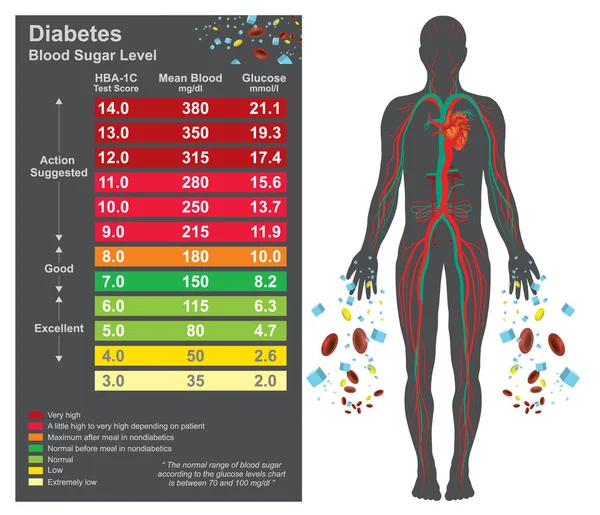
What are the risk factors that warrant HbA1c testing? Some key risk factors include:
- Family history of diabetes
- Physical inactivity
- High blood pressure
- History of gestational diabetes
- Polycystic ovary syndrome
- Certain ethnicities with higher diabetes risk
How often should HbA1c testing be repeated? For those with normal results but risk factors, repeat testing every 3 years is recommended. If prediabetes is detected, testing should be done every 1 to 2 years, along with lifestyle interventions to prevent progression to diabetes.
HbA1c Testing for Diabetes Management
For individuals diagnosed with diabetes, regular HbA1c testing is crucial for monitoring treatment efficacy and overall blood sugar control. How frequently should diabetics get HbA1c tests? Generally, testing is recommended at least twice a year. However, more frequent testing may be necessary if medication changes occur or if blood sugar control is suboptimal.
Preparing for Your HbA1c Test
One of the advantages of the HbA1c test is its simplicity and convenience. Unlike some other medical tests, the HbA1c test doesn’t require any special preparation.

How is the HbA1c test performed? The test is typically done in a doctor’s office or a laboratory. It involves a simple blood draw, either from a finger stick or from a vein in your arm. The sample is then analyzed to determine the percentage of glycated hemoglobin.
Are there any precautions to take before the test? While no fasting or dietary restrictions are necessary for the HbA1c test, it’s essential to inform your healthcare provider about any medications you’re taking, as some can affect the results. Additionally, if you’re scheduled for other blood tests simultaneously, you may need to follow specific instructions for those tests.
Factors Affecting HbA1c Results
While the HbA1c test is generally reliable, several factors can influence the results, potentially leading to falsely high or low readings. Understanding these factors is crucial for accurate interpretation of test results.
Medical Conditions That Can Affect HbA1c
Certain medical conditions can impact HbA1c results. These include:
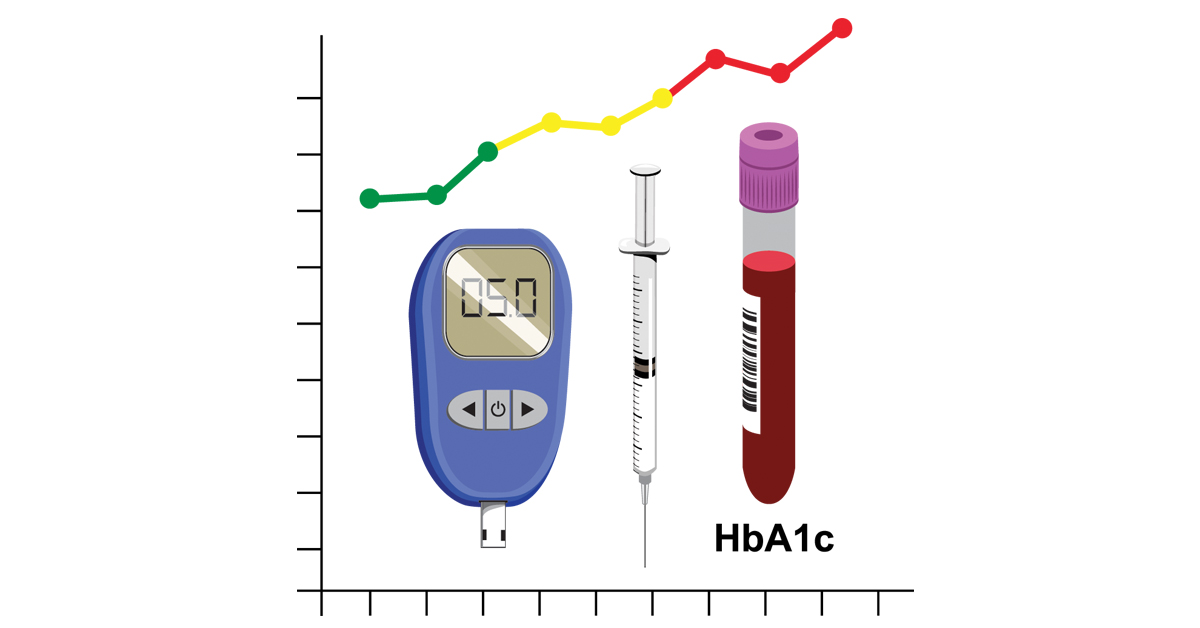
- Kidney failure
- Liver disease
- Severe anemia
- Hemoglobinopathies (such as sickle cell anemia or thalassemia)
How do these conditions affect HbA1c? They can alter the lifespan of red blood cells or the structure of hemoglobin, leading to inaccurate HbA1c measurements.
Medications and HbA1c
Certain medications can also influence HbA1c results. These include:
- Opioids
- Some HIV medications
- High-dose aspirin
- Certain antibiotics
Why do these medications affect HbA1c? They can interfere with the glycation process or alter red blood cell turnover, potentially skewing the results.
Other Factors
Additional factors that can impact HbA1c results include:
- Recent blood loss or blood transfusions
- Pregnancy (especially early or late stages)
- Ethnic variations in hemoglobin structure
Given these potential influences, it’s crucial to discuss any relevant factors with your healthcare provider to ensure accurate interpretation of your HbA1c results.
Setting and Achieving HbA1c Goals
Establishing appropriate HbA1c goals is a critical aspect of diabetes management. These goals help guide treatment decisions and motivate patients to maintain good blood sugar control.

General HbA1c Targets
What is the general HbA1c target for most people with diabetes? The American Diabetes Association recommends an HbA1c goal of less than 7% for many adults with diabetes. However, it’s important to note that this is not a one-size-fits-all target.
Individualizing HbA1c Goals
Why are personalized HbA1c goals important? Individual factors such as age, overall health status, risk of hypoglycemia, and personal preferences should be considered when setting HbA1c targets. For example:
- Younger individuals with no major health issues might aim for lower HbA1c levels to reduce long-term complication risks.
- Older adults or those with multiple health conditions might have higher HbA1c targets to avoid hypoglycemia and other treatment-related risks.
- Pregnant women with diabetes often require stricter HbA1c control to ensure healthy fetal development.
Strategies for Achieving HbA1c Goals
How can individuals work towards their HbA1c goals? Several strategies can help:
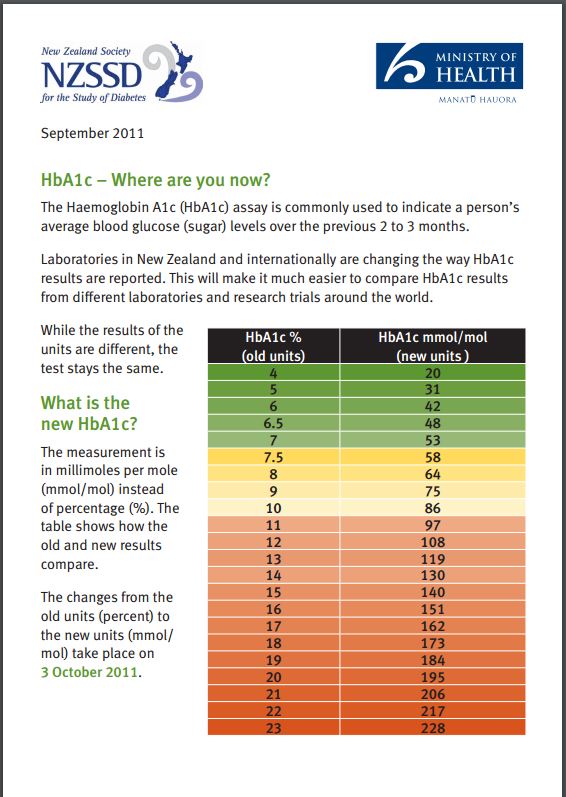
- Regular blood glucose monitoring
- Adherence to prescribed medications
- Following a balanced diet plan
- Engaging in regular physical activity
- Stress management
- Regular check-ups with healthcare providers
Why is a multifaceted approach important? Diabetes management requires a comprehensive strategy that addresses various aspects of health and lifestyle to effectively control blood sugar levels over time.
Beyond HbA1c: Comprehensive Diabetes Management
While the HbA1c test is a valuable tool in diabetes care, it’s essential to recognize its limitations and consider it as part of a broader diabetes management strategy.
The Role of Daily Blood Glucose Monitoring
Why is daily blood glucose monitoring important alongside HbA1c tests? Daily monitoring provides real-time information about blood sugar fluctuations, helping individuals make immediate adjustments to diet, activity, or medication. This day-to-day management complements the long-term view provided by HbA1c tests.
Considering Glycemic Variability
What is glycemic variability, and why is it important? Glycemic variability refers to the swings in blood sugar levels throughout the day. Two individuals might have the same HbA1c level but very different patterns of daily blood sugar fluctuations. Understanding these patterns is crucial for optimizing diabetes management and reducing the risk of complications.
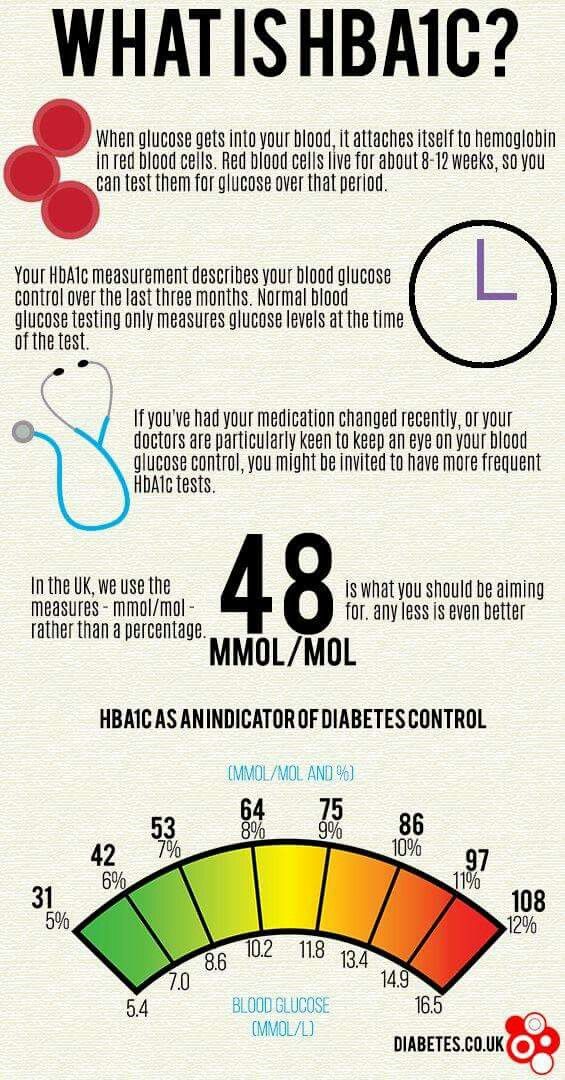
Comprehensive Diabetes Care
What other aspects of health should be monitored in diabetes management? A comprehensive approach to diabetes care includes:
- Regular blood pressure checks
- Lipid profile monitoring
- Kidney function tests
- Eye examinations
- Foot care
Why is a holistic approach necessary? Diabetes can affect multiple body systems, and comprehensive care helps prevent or manage potential complications effectively.
The Importance of Patient Education and Support
How does patient education contribute to effective diabetes management? Empowering patients with knowledge about their condition, treatment options, and self-management techniques is crucial for achieving and maintaining good glycemic control. Diabetes self-management education and support (DSMES) programs play a vital role in this aspect of care.
What topics should be covered in diabetes education? Key areas include:
- Understanding diabetes and its effects on the body
- Proper use of medications and insulin
- Nutrition and meal planning
- Exercise and physical activity
- Blood glucose monitoring techniques
- Managing diabetes-related stress and emotions
- Preventing and managing complications
By combining regular HbA1c testing with comprehensive diabetes care, patient education, and daily self-management practices, individuals with diabetes can significantly improve their health outcomes and quality of life. The HbA1c test serves as a valuable guidepost in this journey, helping both patients and healthcare providers navigate the complex landscape of diabetes management.

All About Your A1C
Español (Spanish) | Print
What has your blood sugar been up to lately? Get an A1C test to find out your average levels—important to know if you’re at risk for prediabetes or type 2 diabetes, or if you’re managing diabetes.
The A1C test—also known as the hemoglobin A1C or HbA1c test—is a simple blood test that measures your average blood sugar levels over the past 3 months. It’s one of the commonly used tests to diagnose prediabetes and diabetes, and is also the main test to help you and your health care team manage your diabetes. Higher A1C levels are linked to diabetes complications, so reaching and maintaining your individual A1C goal is really important if you have diabetes.
What Does the A1C Test Measure?
When sugar enters your bloodstream, it attaches to hemoglobin, a protein in your red blood cells. Everybody has some sugar attached to their hemoglobin, but people with higher blood sugar levels have more. The A1C test measures the percentage of your red blood cells that have sugar-coated hemoglobin.
Who Should Get an A1C Test, and When?
Testing for diabetes or prediabetes:
Get a baseline A1C test if you’re an adult over age 45—or if you’re under 45, are overweight, and have one or more risk factors for prediabetes or type 2 diabetes:
- If your result is normal but you’re over 45, have risk factors, or have ever had gestational diabetes, repeat the A1C test every 3 years.
- If your result shows you have prediabetes, talk to your doctor about taking steps now to improve your health and lower your risk for type 2 diabetes. Repeat the A1C test as often as your doctor recommends, usually every 1 to 2 years.
- If you don’t have symptoms but your result shows you have prediabetes or diabetes, get a second test on a different day to confirm the result.
- If your test shows you have diabetes, ask your doctor to refer you to diabetes self-management education and support services so you can have the best start in managing your diabetes.

Managing diabetes:
If you have diabetes, get an A1C test at least twice a year, more often if your medicine changes or if you have other health conditions. Talk to your doctor about how often is right for you.
How to Prepare for Your A1C Test
The test is done in a doctor’s office or a lab using a sample of blood from a finger stick or from your arm. You don’t need to do anything special to prepare for your A1C test. However, ask your doctor if other tests will be done at the same time and if you need to prepare for them.
Your A1C Result
Diagnosing Prediabetes or Diabetes
| Normal | Below 5.7% |
|---|---|
| Prediabetes | 5.7% to 6.4% |
| Diabetes | 6.5% or above |
A normal A1C level is below 5.7%, a level of 5.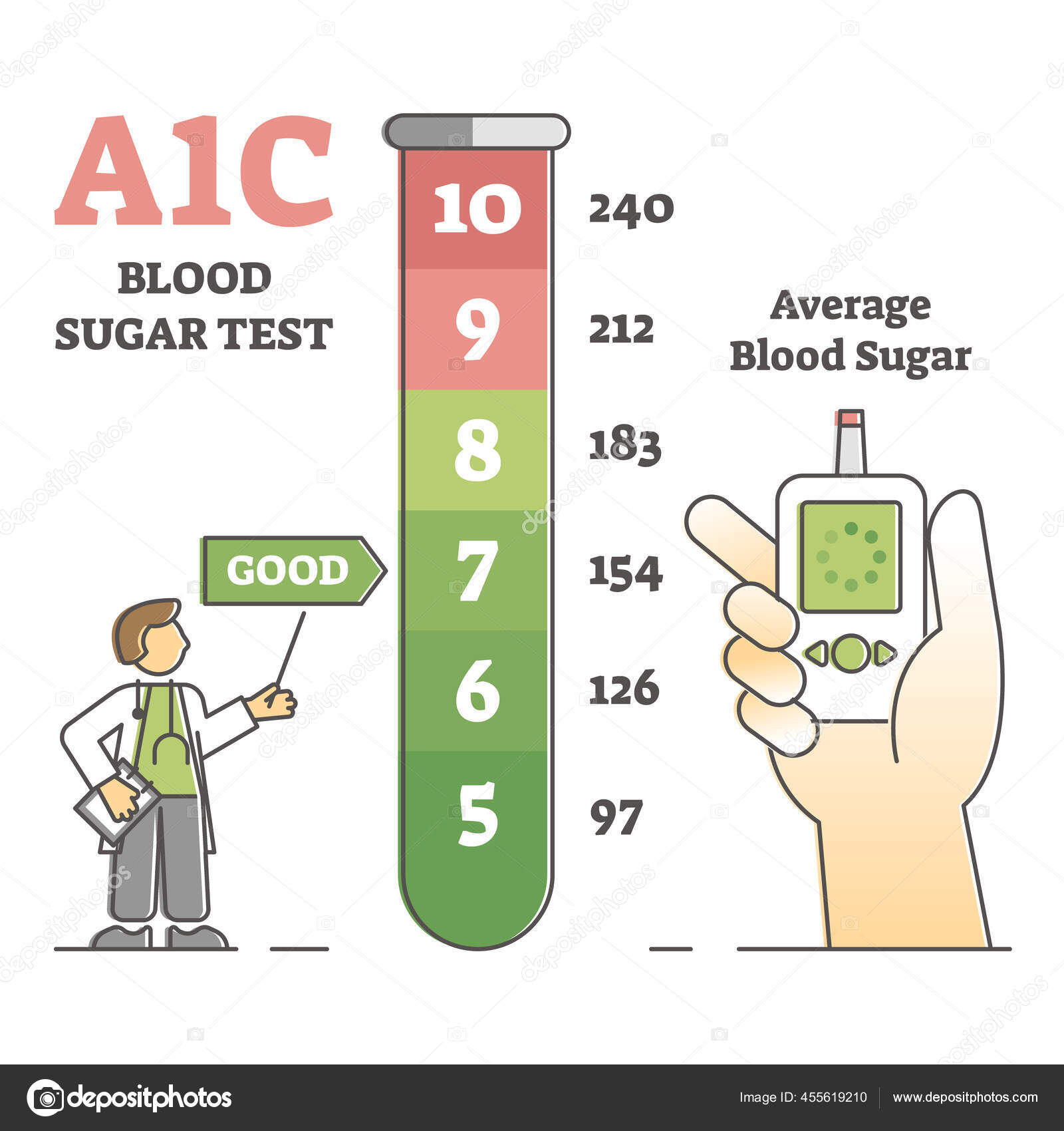 7% to 6.4% indicates prediabetes, and a level of 6.5% or more indicates diabetes. Within the 5.7% to 6.4% prediabetes range, the higher your A1C, the greater your risk is for developing type 2 diabetes.
7% to 6.4% indicates prediabetes, and a level of 6.5% or more indicates diabetes. Within the 5.7% to 6.4% prediabetes range, the higher your A1C, the greater your risk is for developing type 2 diabetes.
Managing Diabetes
Your A1C result can also be reported as estimated average glucose (eAG), the same numbers (mg/dL) you’re used to seeing on your blood sugar meter:
A1C % | eAG mg/dL |
|---|---|
7 | 154 |
8 | 183 |
9 | 212 |
10 | 240 |
What Can Affect Your A1C Result?
Get your A1C tested in addition to—not instead of—regular blood sugar self-testing if you have diabetes.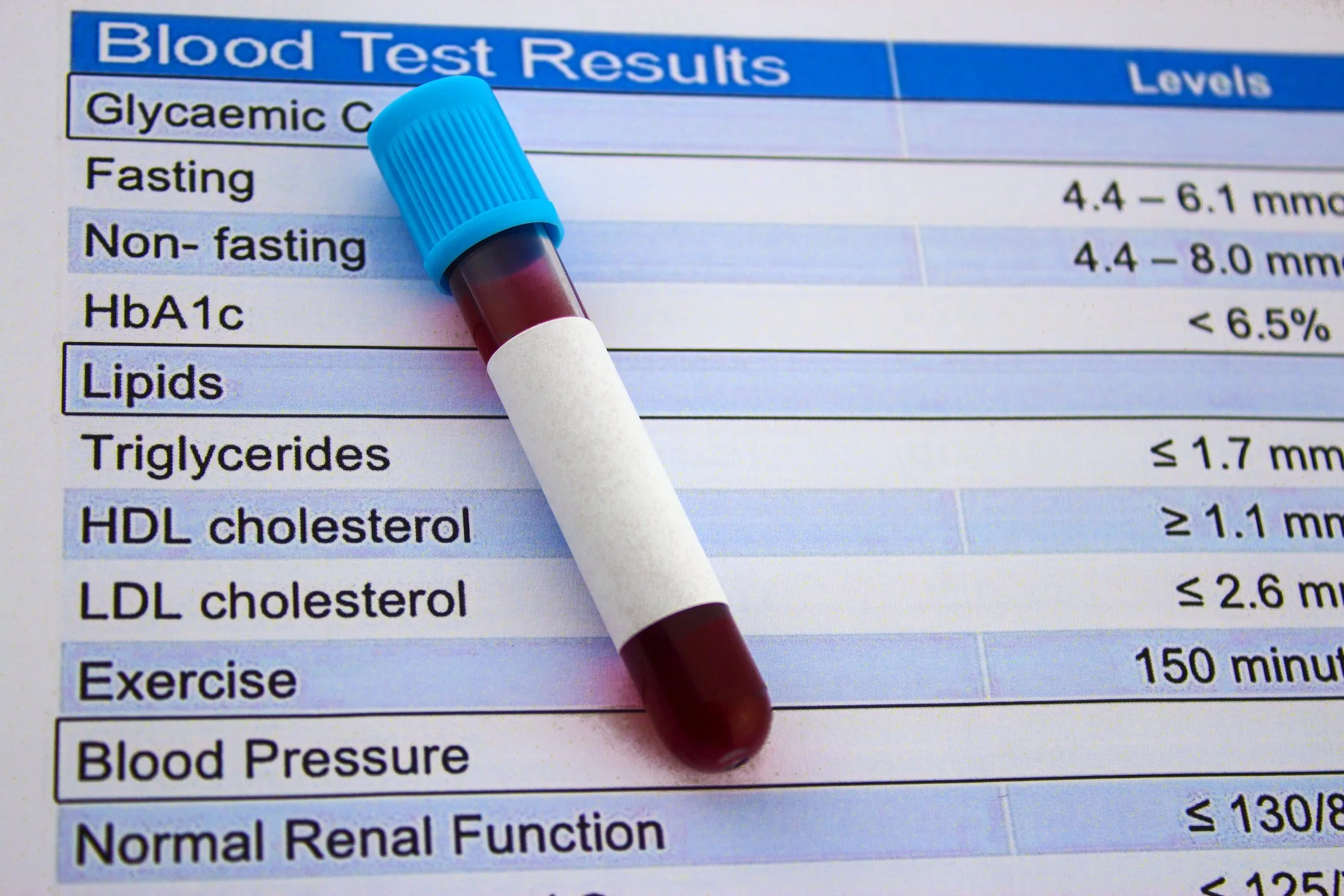
Several factors can falsely increase or decrease your A1C result, including:
- Kidney failure, liver disease, or severe anemia.
- A less common type of hemoglobin that people of African, Mediterranean, or Southeast Asian descent and people with certain blood disorders (such as sickle cell anemia or thalassemia) may have.
- Certain medicines, including opioids and some HIV medications.
- Blood loss or blood transfusions.
- Early or late pregnancy.
Let your doctor know if any of these factors apply to you, and ask if you need additional tests to find out.
Your A1C Goal
The goal for most people with diabetes is 7% or less. However, your personal goal will depend on many things such as your age and any other medical conditions. Work with your doctor to set your own individual A1C goal.
Younger people have more years with diabetes ahead, so their goal may be lower to reduce the risk of complications, unless they often have hypoglycemia (low blood sugar, or a “low”).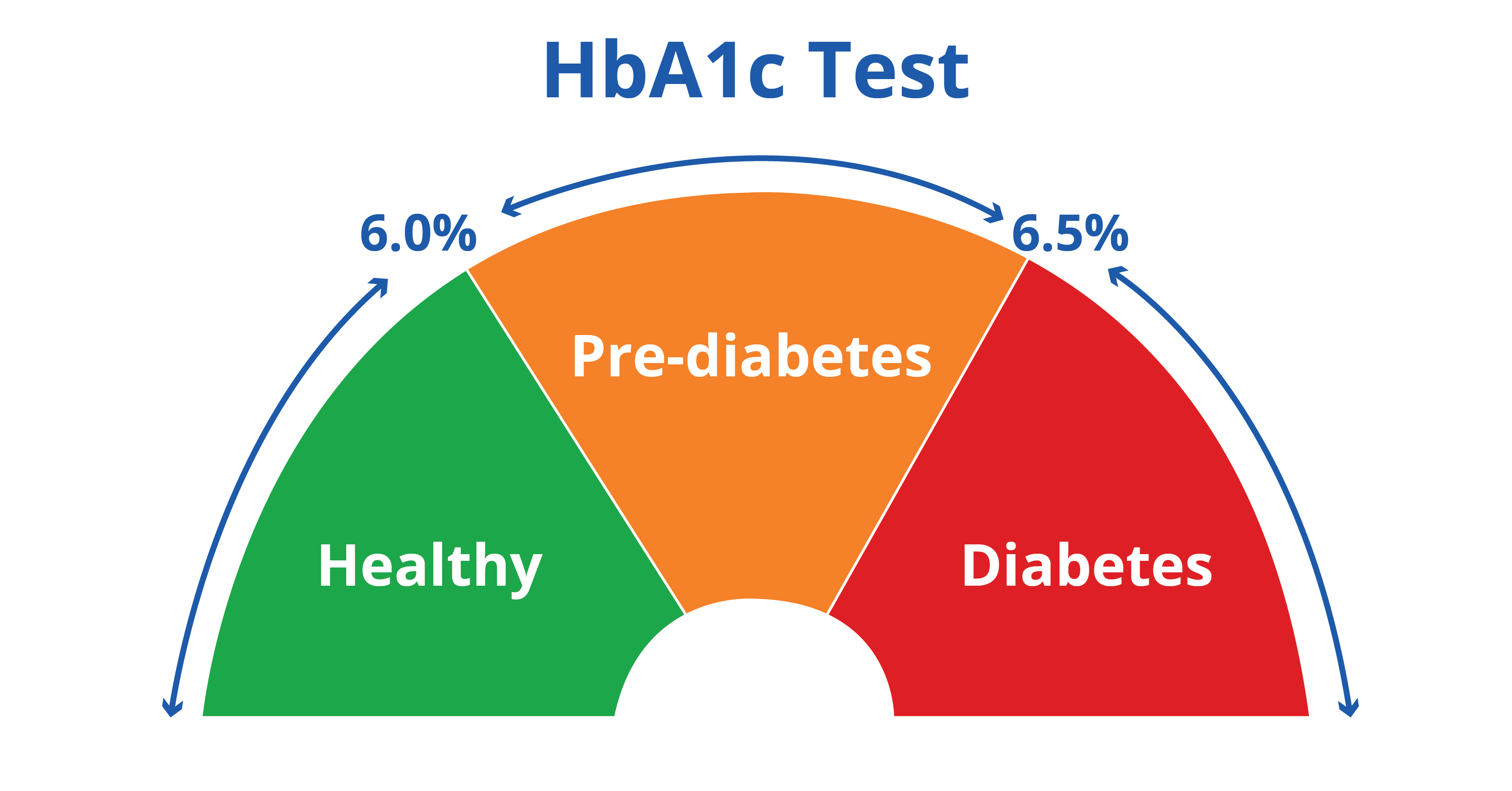 People who are older, have severe lows, or have other serious health problems may have a higher goal.
People who are older, have severe lows, or have other serious health problems may have a higher goal.
A1C: Just Part of the Toolkit
A1C is an important tool for managing diabetes, but it doesn’t replace regular blood sugar testing at home. Blood sugar goes up and down throughout the day and night, which isn’t captured by your A1C. Two people can have the same A1C, one with steady blood sugar levels and the other with high and low swings.
If you’re reaching your A1C goal but having symptoms of highs or lows, check your blood sugar more often and at different times of day. Keep track and share the results with your doctor so you can make changes to your treatment plan if needed.
Top of Page
- CDC’s Division of Diabetes Translation
- Diabetes Basics
- Blood Sugar Testing
- Diabetes Features & Spotlights
- CDC Diabetes on Facebook
- @CDCDiabetes on Twitter
What is HbA1c? | Blood Test | Target Levels
HbA1c is your average blood glucose (sugar) levels for the last two to three months.
/1087678_color1-5bc645a746e0fb00516179c9.png) If you have diabetes, an ideal HbA1c level is 48mmol/mol (6.5%) or below.
If you have diabetes, an ideal HbA1c level is 48mmol/mol (6.5%) or below.
If you’re at risk of developing type 2 diabetes, your target HbA1c level should be below 42mmol/mol (6%).
On this page we’ll go through what HbA1c means, and why aiming for your target level is so important. We’ll also explain the HbA1c test in more detail, and show you what you can do to lower your HbA1c levels if they’re too high. Plus, you can use our HbA1c converter tool if you’re looking to find out your level in % or mmol/mol.
What does HbA1c mean?
HbA1c is what’s known as glycated haemoglobin. This is something that’s made when the glucose (sugar) in your body sticks to your red blood cells. Your body can’t use the sugar properly, so more of it sticks to your blood cells and builds up in your blood. Red blood cells are active for around 2-3 months, which is why the reading is taken quarterly.
A high HbA1c means you have too much sugar in your blood. This means you’re more likely to develop diabetes complications, like serious problems with your eyes and feet.
Knowing your HbA1c level and what you can do to lower it will help you reduce your risk of devastating complications. This means getting your HbA1c checked regularly. It’s a vital check and part of your annual review. You’re entitled to get this test at least once a year. But if your HbA1c is high or needs a little more attention, it’ll be done every three to six months. It’s really important not to skip these tests, so if you haven’t had one in over a year contact your healthcare team.
Once you know your HbA1c level, it’s important that you understand what the results mean and how to stop them from getting too high. Even a slightly raised HbA1c level makes you more at risk of serious complications, so get all the facts here and be in the know about HbA1c.
What is a HbA1c test?
The hemoglobin A1c (HbA1c) test measures the amount of blood sugar (glucose) attached to your hemoglobin. Hemoglobin is the part of your red blood cells that carries oxygen from your lungs to the rest of your body. It is an important blood test that gives a good indication of how well your diabetes is being controlled.
It is an important blood test that gives a good indication of how well your diabetes is being controlled.
You can check these average blood sugar levels yourself, but you’ll have to buy a kit, whereas your healthcare professional will do it for free. It’s different from a finger-prick test, which is a snapshot of your blood sugar levels at a particular time, on a particular day.
You find out your HbA1c level by getting a blood test by a doctor or nurse. Your healthcare team will arrange this for you, but chase it up with your GP if you haven’t had one for a few months.
Most people will have the test every three to six months. But you may need it more often if you’re planning for a baby, your treatment has recently changed, or you’re having problems managing your blood sugar levels.
And some people will need the test less often, usually later on during pregnancy. Or need a different test altogether, like with some types of anaemia. A fructosamine test can be used instead, but it’s very rare.
An HbA1c test is also used to diagnose diabetes, and to keep an eye on your levels if you’re at risk of developing diabetes (you have prediabetes).
The test is sometimes called haemoglobin A1c or just A1c.
Your HbA1c results
You should get the results quickly. The result of the HbA1c test lets your healthcare team know if they need to change your treatment or medication to help you manage your levels better. But it also tells you a number and it’s important you understand what this means. Some people find it helps to write their results down in a diary, to keep track of them and see if they can spot any trends.
And your HbA1c can change for lots of reasons, including:
- if you’re unwell
- if you’re taking other medicines, like steroids
- changes in lifestyle
- if you’re feeling very stressed or you’re depressed.
You’ll talk to your healthcare team about a target level that you need to aim for. We know this isn’t as easy as it sounds, but it’s important you do everything you can to keep in your target range. The longer your HbA1c level is even slightly high, the more you’re at risk of developing life-threatening complications.
The longer your HbA1c level is even slightly high, the more you’re at risk of developing life-threatening complications.
We have lots of information and tools to help you lower your HbA1c.
What is a normal range for an HbA1c test?
If you have diabetes, an ideal HbA1c level is 48mmol/mol (6.5%) or below.
HbA1c levels and targets
But everyone’s different. So your healthcare team may give you an individual target level that takes into account your current level and when your next test is. So you can bring it down in stages and isn’t a sudden big drop.
And we’re not saying it’s easy to get to and stay at this level. We know it’s difficult, and we’re here to give you advice and information to help.
If you’re at risk of type 2 diabetes
There are different target HbA1c levels for people at risk of developing type 2 diabetes. If you’ve been told you’re at risk, your target level should be below 42mmol/mol (6%). We have lots more information for you if you’re at risk of type 2.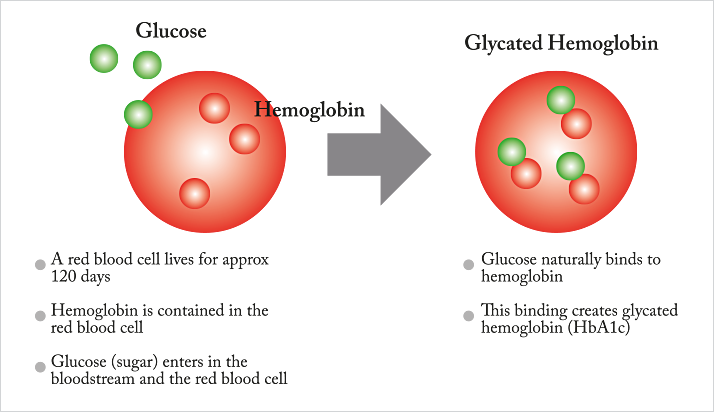
Type 2 diabetes remission
Remission is when a person with type 2 diabetes has healthy blood glucose (also called sugar) levels for the long-term, without taking any diabetes medications. We’re working with international experts to agree this, but our researchers used an HbA1c level of 48mmol/mol (6.5%) or less to define remission.
Type 2 diabetes is still a serious condition. It can be lifelong and get worse over time for many, but it doesn’t have to be like this for everyone. This can be life-changing. Find out more about type 2 diabetes remission.
HbA1c converter
If you’re wondering how to convert HbA1c mmol/mol to %, or vice versa, our tool can help you.
Mmol/mol stands for millimoles per mole. A mole is a scientific unit often used to measure chemicals, and it has been the standard measurement for glucose levels since 2009. Before that, a percentage was used. That’s why measurements often have a percentage as well.
If you’re more used to the percentage system, use our converter tool below to find out your level in millimoles.
Convert HbA1c % to mmol/mol and vice versaSelect the value for your conversion: Enter value: The HbA1c calculator was developed by |
How to lower your HbA1c levels
If your levels have gone above your target since your last check, it’s understandable to be worried. Even a slightly high HbA1c level puts you more at risk of developing serious complications in your body. But knowing your numbers and what that means is an important and good first step – now you need to know how to lower them.
Lots of things can cause your HbA1c levels to change and there’s action you and your healthcare team can take to bring them down to your target level:
- Your diabetes team may need to review your medication and increase the dose or try a new one.

- Ask them about local diabetes education courses – there’s always more to learn with diabetes and a course will help you take practical steps to lower your HbA1c.
- Get more active – moving more is good for everyone, but it can specifically help to bring down your HbA1c levels.
- Get advice on balanced, healthy eating.
- Stop smoking – smoking makes it harder for blood to flow around your body.
And if you want to hear from others who are experiencing this too, think about joining our online forum. It’s a place where you can chat to others or just read other people’s stories.
And don’t forget, get advice from your healthcare team. They’re here to help.
HbA1c test and finger-prick test – what’s the difference?
Get more information on checking your own blood sugars using a finger-prick test.
| HbA1c test | Finger-prick test |
|---|---|
| Measures your average blood sugar levels over last 2 to 3 months | Snapshot of blood sugar levels at the time |
| Everyone with diabetes should have this test | Only people taking certain medicines need to do this test, like insulin and sulphonylureas |
| Usually done every 3 to 6 months | Done a number of times a day, usually ranging from twice to 10 times |
| Blood is taken from arm or finger | Tiny drop of blood taken from the finger |
A healthcare professional should do this for you, though you can pay for a kit and do it yourself. These aren’t available on prescription. These aren’t available on prescription. | You can do this yourself, using a testing kit |
| Doctors can use this test to find out how someone is managing their diabetes, to diagnose diabetes and find out if someone is at risk of type 2 diabetes | This test is mainly used for people living with diabetes |
Glycated hemoglobin (HbA1c)
Glycated hemoglobin (A1c) is a specific compound of erythrocyte hemoglobin with glucose, the concentration of which reflects the average blood glucose over a period of about three months.
Synonyms Russian
Glycohemoglobin, hemoglobin A1c, Hb A1c , glycosylated hemoglobin.
English synonyms
Glycated hemoglobin, hemoglobin A1c, HbA1c, glycohemoglobin, glycosylated hemoglobin.
Test method *
Ion exchange high performance liquid chromatography (HPLC).
* Method may vary in some regions.
Units
% (percentage).
What biomaterial can be used for research?
Venous blood.
How to properly prepare for an examination?
- Do not eat for 2-3 hours before the examination, you can drink pure non-carbonated water.
- Exclude physical and emotional overexertion within 30 minutes prior to the study.
- Do not smoke for 30 minutes before the test.
Overview of the study
The glycated hemoglobin (A1c) test helps to assess the average blood glucose level over the past 2-3 months.
Hemoglobin is an oxygen-carrying protein found inside red blood cells (erythrocytes). There are several types of normal hemoglobin, and many abnormal varieties have been identified, although the predominant form is hemoglobin A, which is 95-98% of total hemoglobin. Hemoglobin A is divided into several components, one of which is A1c. Part of the glucose circulating in the blood spontaneously binds to hemoglobin, forming the so-called glycated hemoglobin. The higher the concentration of glucose in the blood, the more glycated hemoglobin is formed. Having combined with hemoglobin, glucose remains “in conjunction” with it until the very end of the life of the erythrocyte, that is, 120 days. The combination of glucose with hemoglobin A is called HbA1c or A1c. Glycated hemoglobin is formed in the blood and disappears from it every day, as old red blood cells die, and young (not yet glycated) take their place.
Part of the glucose circulating in the blood spontaneously binds to hemoglobin, forming the so-called glycated hemoglobin. The higher the concentration of glucose in the blood, the more glycated hemoglobin is formed. Having combined with hemoglobin, glucose remains “in conjunction” with it until the very end of the life of the erythrocyte, that is, 120 days. The combination of glucose with hemoglobin A is called HbA1c or A1c. Glycated hemoglobin is formed in the blood and disappears from it every day, as old red blood cells die, and young (not yet glycated) take their place.
The hemoglobin A1c test is used to monitor the condition of patients diagnosed with diabetes mellitus. It helps to assess how effectively the regulation of glucose levels during treatment is going on.
For some patients, a hemoglobin A1c test is prescribed to diagnose diabetes and pre-diabetes in addition to a fasting plasma glucose test and a glucose tolerance test.
The resulting value is measured as a percentage. Patients with diabetes should strive to keep their glycated hemoglobin levels below 7%.
Patients with diabetes should strive to keep their glycated hemoglobin levels below 7%.
A1c should be reported in one of three ways:
- as a percentage of total hemoglobin,
- in mmol/mol, according to the International Federation of Clinical Chemistry and Laboratory Medicine,
- as mean glucose mg/dl or mmol/l.
What is research used for?
- For the control of glucose in patients with diabetes mellitus – for them to maintain its level in the blood as close to normal as possible is very important. This helps to minimize complications to the kidneys, eyes, cardiovascular and nervous systems.
- To determine the patient’s average blood glucose over the past few months.
- To validate the correctness of the measures taken for the treatment of diabetes and to find out if they need to be adjusted.
- To detect uncontrolled rises in blood glucose in patients with newly diagnosed diabetes mellitus.
 Moreover, the test may be prescribed several times until the desired glucose level is detected, then it needs to be repeated several times a year to make sure that the normal level is maintained.
Moreover, the test may be prescribed several times until the desired glucose level is detected, then it needs to be repeated several times a year to make sure that the normal level is maintained. - For preventive purposes, to diagnose diabetes at an early stage.
When is the test ordered?
Depending on the type of diabetes and how well the disease is treated, A1c is tested 2 to 4 times a year. On average, patients with diabetes are recommended to be tested for A1c twice a year. If the patient is diagnosed with diabetes for the first time or the control measurement fails, the analysis is re-assigned.
In addition, this test is ordered if the patient is suspected of having diabetes because there are symptoms of high blood glucose:
- extreme thirst,
- frequent copious urination,
- fatigue,
- blurred vision,
- increased susceptibility to infections.
What do the results mean?
Reference values: * 4. 27 – 6.07%.
27 – 6.07%.
*Reference values vary for some regions due to the use of different test systems for the study.
The closer the A1c level is to 7% in a diabetic patient, the easier it is to control the disease. Accordingly, with an increase in the level of glycated hemoglobin, the risk of complications also increases.
The results of the analysis for A1c are interpreted as follows.
Glycated hemoglobin index | Meaning |
4-6.2% | The patient does not have diabetes |
6.5% or more | The patient is diabetic |
5.7-6.4% | Prediabetes (impaired glucose tolerance associated with an increased risk of diabetes) |
According to the clinical guidelines of the Ministry of Health of the Russian Federation of the Russian Association of Endocrinologists “Algorithms for specialized medical care for patients with diabetes mellitus” (2019), an additional diagnostic indicator is the average daily plasma glucose level (AGG) for the last three months and its correlation with the level of HbA1c.
What can influence the result?
Patients with abnormal hemoglobin, such as those with sickle cells, will have low glycated hemoglobin. In addition, if a person suffers from anemia, severe bleeding, his test results may also be underestimated. On the contrary, A1c values are overestimated with iron deficiency and with a recent blood transfusion (since liquid blood preservatives contain a high concentration of glucose).
Important Notes
The A1c test does not reflect sudden changes in blood glucose. Glucose fluctuations in patients with labile diabetes will also not be detected by this test.
Also recommended
- Plasma glucose
- Glucose tolerance test
- Fructosamine
Who orders the examination?
Therapist, endocrinologist.
Test for glycated hemoglobin
Method of determination
Colorimetric.
Test material
Whole blood (with EDTA)
Home visit available
Online check-in
Synonyms: Blood test for glycated hemoglobin. Glycohemoglobin; HbA1c; Hemoglobin A1c; A1c; HgbA1c; Hb1c.
Brief characteristics of the analyte Glycated hemoglobin
It is formed as a result of the slow non-enzymatic addition of glucose to hemoglobin A contained in erythrocytes. Glycated (the term “glycosylated” is also used) hemoglobin is present in the blood in healthy people. The rate of this non-enzymatic addition of glucose and the amount of glycated hemoglobin formed depend on the average blood glucose level over the lifetime of red blood cells. As a result of the reaction, several forms of glycated hemoglobins are formed: HbA1a, HbA1b, HbA1c. The latter form quantitatively predominates and more closely correlates with the severity of diabetes mellitus. Glycated hemoglobin reflects hyperglycemia that has occurred throughout the life of erythrocytes (up to 120 days). Erythrocytes circulating in the blood have different ages. Usually they are guided by an average period of 60 days. The level of glycated hemoglobin is an indicator of the compensation of carbohydrate metabolism during this period of time, and is used to evaluate the effectiveness of diet and treatment. Normalization of the level of glycated hemoglobin in the blood occurs 4-6 weeks after reaching a normal glucose level.
Glycated hemoglobin reflects hyperglycemia that has occurred throughout the life of erythrocytes (up to 120 days). Erythrocytes circulating in the blood have different ages. Usually they are guided by an average period of 60 days. The level of glycated hemoglobin is an indicator of the compensation of carbohydrate metabolism during this period of time, and is used to evaluate the effectiveness of diet and treatment. Normalization of the level of glycated hemoglobin in the blood occurs 4-6 weeks after reaching a normal glucose level.
In patients with diabetes, the level of HbA1c may be increased by 2-3 times. In accordance with the recommendations of the World Health Organization (WHO), this test is recognized as optimal and necessary for the control of diabetes.
What determines the result of the test for Glycated hemoglobin
Glycated hemoglobin is used as an indicator of the risk of developing complications of diabetes. Clinical studies show that a 1% increase in the proportion of glycated hemoglobin (measured by certified methods) is associated with an increase in plasma glucose levels of approximately 2 mmol/l. Normalization of the level of glycated hemoglobin in the blood occurs 4-6 weeks after reaching a normal glucose level. Patients with diabetes are recommended to study the level of glycated hemoglobin twice a year if therapy is stable and target values are achieved, but at least once a quarter if therapy is changed or target values \u200b\u200bof HbA1c are not achieved. The usual HbA1c targets for adults in diabetes therapy are below or near 7.0%. The physician’s choice of individual HbA1c targets may depend on the patient’s age, comorbidities, presence of complications, risk of severe hypoglycemia, and life expectancy.
Normalization of the level of glycated hemoglobin in the blood occurs 4-6 weeks after reaching a normal glucose level. Patients with diabetes are recommended to study the level of glycated hemoglobin twice a year if therapy is stable and target values are achieved, but at least once a quarter if therapy is changed or target values \u200b\u200bof HbA1c are not achieved. The usual HbA1c targets for adults in diabetes therapy are below or near 7.0%. The physician’s choice of individual HbA1c targets may depend on the patient’s age, comorbidities, presence of complications, risk of severe hypoglycemia, and life expectancy.
In 2011, WHO approved the use of HbA1c to diagnose diabetes. The test must be performed using an HbA1c test certified by the National Glycohemoglobin Standardization Program (NGSP) or International Federation of Clinical Chemists (IFCC) and standardized by the Diabetes Control and Complications Trial (DCCT). The level of HbA1c ≥ 6.5% (48 mmol/mol) was chosen as a diagnostic criterion for diabetes mellitus.



 Moreover, the test may be prescribed several times until the desired glucose level is detected, then it needs to be repeated several times a year to make sure that the normal level is maintained.
Moreover, the test may be prescribed several times until the desired glucose level is detected, then it needs to be repeated several times a year to make sure that the normal level is maintained.